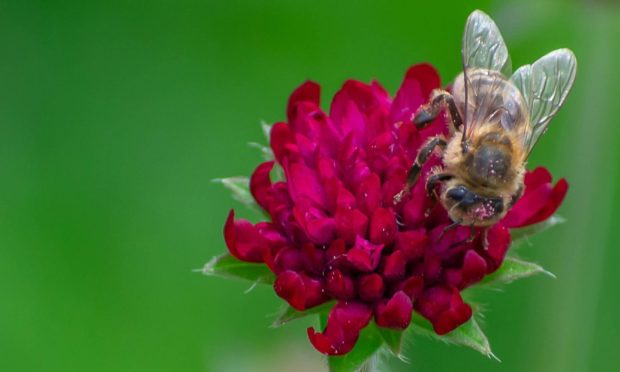An outbreak of a deadly honeybee disease – American Foulbrood (AFB) – has been confirmed in a hive in Perthshire.
The outbreak in an apiary in the Stanley area of Perthshire was confirmed by Science & Advice for Scottish Agriculture (SASA) on May 21 and the infected hive will be destroyed.
SASA said beekeepers located within three kilometres of the affected colony will be alerted via BeeBase – the government database of beekeepers – and encouraged to increase their biosecurity.
Scotland’s chief veterinary officer, Sheila Voas, said although the outbreak of the deadly honeybee disease was disappointing, it served as a “timely reminder” that beekeepers should remain vigilant for signs of the disease.
“There is no treatment permitted in the UK for AFB and therefore the bees, comb or bee products from the hive are required to be destroyed – by burning – whilst the hive, debris from the hive and any appliances or other things liable to spread the disease will be served with a notice requiring either treatment – sterilisation – or destruction,” added Ms Voas.
“The movement of bees and related equipment into, or out of, the affected apiary will be under specific controls supervised by Scottish Government bee inspectors and will include enhanced biosecurity measures and increased vigilance in the area.”
She said AFB – which is a notifiable disease under The Bee Diseases and Pests Control (Scotland) Order 2007 – posed no risks to public health and no implications for the quality and safety of Scottish honey.
AFB causes
According to the Scottish Government, AFB is caused by a spore forming bacterium called Paenibacillus larvae.
These spores are the infective stage of the disease and honeybee infection begins when food, contaminated by the spores, is fed to larvae by the nurse bees.
The spores then germinate once they are in the gut of the honeybee larvae, and the bacteria multiplies once it moves into the larval tissues.
Infected larvae normally die after the cell is sealed and millions of infective spores form in the larval remains – these can remain viable for many years and are very resistant to extremes of temperature and many disinfectants.
Beekeepers wanting to find out more information about AFB, or to report suspicion of the disease, are asked to contact Bees_mailbox@gov.scot
